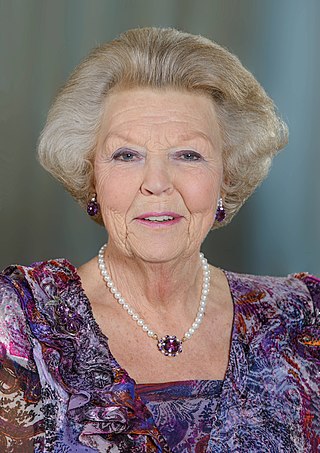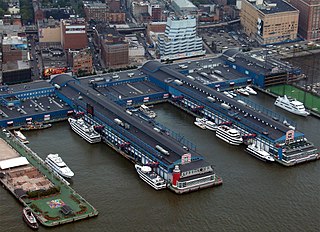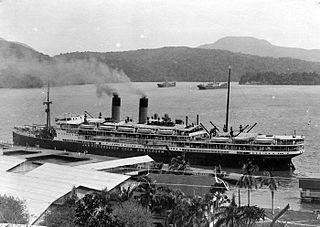
The Hague is a city and municipality of the Netherlands, situated on the west coast facing the North Sea. The Hague is the country's administrative centre and its seat of government, and while the official capital of the Netherlands is Amsterdam, The Hague has been described as the country's de facto capital. The Hague is also the capital of the province of South Holland, and the city hosts both the International Court of Justice and the International Criminal Court.

Beatrix is a member of the Dutch royal house who reigned as Queen of the Netherlands from 1980 until her abdication in 2013.

Wilhelmina was Queen of the Netherlands from 1890 until her abdication in 1948. She reigned for nearly 58 years, longer than any other Dutch monarch. Her reign saw World War I, the Dutch economic crisis of 1933 and World War II.

Scheveningen[ˈsxeːvənɪŋə(n)](listen) is one of the eight districts of The Hague, Netherlands, as well as a subdistrict (wijk) of that city. Scheveningen is a modern seaside resort with a long, sandy beach, an esplanade, a pier, and a lighthouse. The beach is popular for water sports such as windsurfing and kiteboarding. The harbour is used for both fishing and tourism.

Emma of Waldeck and Pyrmont was Queen of the Netherlands and Grand Duchess of Luxembourg as the wife of King-Grand Duke William III. An immensely popular member of the Dutch Royal Family, Queen Emma served as regent for her daughter, Queen Wilhelmina, during the latter's minority from 1890 until 1898.

A pier is a raised structure that rises above a body of water and usually juts out from its shore, typically supported by piles or pillars, and provides above-water access to offshore areas. Frequent pier uses include fishing, boat docking and access for both passengers and cargo, and oceanside recreation. Bridges, buildings, and walkways may all be supported by architectural piers. Their open structure allows tides and currents to flow relatively unhindered, whereas the more solid foundations of a quay or the closely spaced piles of a wharf can act as a breakwater, and are consequently more liable to silting. Piers can range in size and complexity from a simple lightweight wooden structure to major structures extended over 1,600 m (5,200 ft). In American English, a pier may be synonymous with a dock.

Ryde Pier is an early 19th century pier serving the town of Ryde, on the Isle of Wight, off the south coast of England. It is the world's oldest seaside pleasure pier. Ryde Pier Head railway station is at the sea end of the pier, and Ryde Esplanade railway station at the land end, both served by Island Line trains.

Princess Ariane of the Netherlands, Princess of Orange-Nassau is the third and youngest daughter of King Willem-Alexander and Queen Máxima. Princess Ariane is a member of the Dutch Royal House and currently third in the line of succession to the Dutch throne.
Sandro Calabro is a Dutch former professional footballer who played as a striker.

The Louwman Museum is a museum for historic cars, coaches, and motorcycles in The Hague, Netherlands. It is situated on the Leidsestraatweg near the A44 highway. The museum's former names are "Nationaal Automobiel Museum" and "Louwman Collection".

The Holland class was a class of six protected cruisers of the Royal Netherlands Navy. The class was built in two groups, each consisting of three ships.

HNLMS Koningin Wilhelmina der Nederlanden was a unique protected cruiser of the Royal Netherlands Navy built by the Rijkswerf in Amsterdam.

Beaumaris Pier is a pier in Beaumaris, Anglesey, North Wales.

Penarth Pier is a Victorian era pier in the town of Penarth, Vale of Glamorgan, South Wales. The pier was opened in 1898 and was a popular attraction to seaside-goers at the time, who also enjoyed trips on pleasure steamers that operated from the pier. It has on several occasions been damaged by vessels colliding with the structure and in 1931, a fire broke out in one of the pavilions. This wooden pavilion was never replaced, but a concrete pavilion has been used over the years as a concert hall, ballroom, cinema and for other purposes. It is currently home to the Penarth Pier Pavilion.

HNLMS Holland was a Holland-class protected cruiser of the Royal Netherlands Navy.

The Floriade 2012 was a Dutch horticultural exposition held in Venlo, Netherlands. It was the sixth Floriade and was held from April 5 to October 7, 2012. The Floriade 2012 was opened by Queen Beatrix. The exposition's theme and slogan was "Be part of the theatre in nature; get closer to the quality of life".
The Vischpoort or Vispoort is a late-14th-century city gate and former lighthouse in Harderwijk, Netherlands. The gate, which is located on the historical seaside of the Zuiderzee, is the only one of five gates in the city walls that remains. Between 1851 and 1947 the Vischpoort served as a lighthouse. The Vischpoort is listed as a national heritage site.

The Monumental Clock[Dutch: Monumentale klok], commonly known as the Zebra clock[Dutch: Zebraklok], is a street clock and work of public art on the Bezuidenhoutseweg street side of the Koningin Julianaplein square, next to Den Haag central railway station in The Hague, Netherlands. It is a local landmark and popular as a meeting-place for people arriving or departing the city by train.

SS Jan Pieterszoon Coen was a Dutch passenger ship named after a former Governor-General of the Dutch East Indies that was scuttled as a blockship during the German invasion of the Netherlands in May 1940 in the port of IJmuiden, North Holland to prevent the German Navy from entering the port.

De Vloek was a squatted, self-managed social centre in The Hague, the Netherlands, between 2002 and 2015. Located on Hellingweg 127 in Scheveningen, beside the North Sea, the squat hosted workplaces, living spaces, a venue, and a vegan restaurant. The local council tolerated the occupation until 2014, when it decided to sell the building. A political struggle over the eviction began; some political parties supported the squatters and the Scheveningen Pier was briefly occupied as a protest action. A deal was made for the squatters to move to a former school building and the Vloek was eventually evicted in September 2015.





















